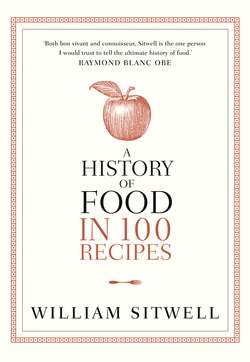Читать книгу A History of Food in 100 Recipes - William Sitwell - Страница 10
Оглавление3
Tiger nut sweets
circa 1400 BC
AUTHOR: Unknown, FROM: The Bible, Genesis 43: 11
And their father Israel said unto them, If it must be so now, do this; take of the best fruits in the land in your vessels, and carry down the man a present, a little balm, and a little honey, spices and myrrh, nuts and almonds.
Don’t think that food in prehistorical times was entirely savoury – all roasted lamb, flatbreads and chickpeas. After all they were human, just like you and me. And while I might crave a HobNob come four o’clock, so the ancients would have needed to sate their cravings for sweet things.
If we are to believe the story of Joseph’s rise to prominence in Egypt – and a large entertainment industry depends on it, or his colourful coat, to be precise – then archaeological evidence suggests he may have lived around 1700 bc.
According to the biblical account, after Joseph’s jealous brothers had forced him into exile – selling him as a slave to people travelling into Egypt – he rose in prominence partly due to his gift for interpreting dreams in which he advised the Pharoah to store up food during the good years, in anticipation of lean years to come. Sure enough those lean years came and people flocked from neighbouring countries to buy grain, including Joseph’s estranged brothers, looking for food to take back to famine-ravaged Canaan.
Joseph, rewarded with king-like status for his dream-interpreting and so grand now that they don’t recognise him as their long-lost brother, permits them to take food back to their family, saying that they can have more food but only if they return with their younger brother Benjamin. This they tell their father back home, who is suspicious at first but then relents. He then sends off his sons with advice and a few things in their pockets that unwittingly ensures him a place in A History of Food in 100 Recipes. For take a closer look at what he stuffs in those pockets: honey, spices, nuts and almonds. All the ingredients, in short, for tiger nuts.
No doubt he also popped a recipe for them in Benjamin’s top pocket. It was an early example of the tradition of taking a sweet gift to someone as a sign of appreciation or affection. Fragments of such a recipe exist on scraps of parchment from the same era and they are called tiger nuts because they resemble the tuber root of the same name. They are thought to be the earliest sweets and, with their sticky mix of honey, dates, sesame seeds and almonds – blended together and rolled into balls – are pretty nutritious too. Try them after dinner with a dark, black cup of intense coffee. And make sure to don a dressing gown or cloak decorated with a patchwork of colours, for added authenticity.
Bridgeman Art Library: Biblioteca Estense Universitaria, Modena, Italy
A piece of fine parchment paper showing Genesis, the creation of the universe, from the magnificent Italian Renaissance Bible of Borso d’Este Vol 1.
